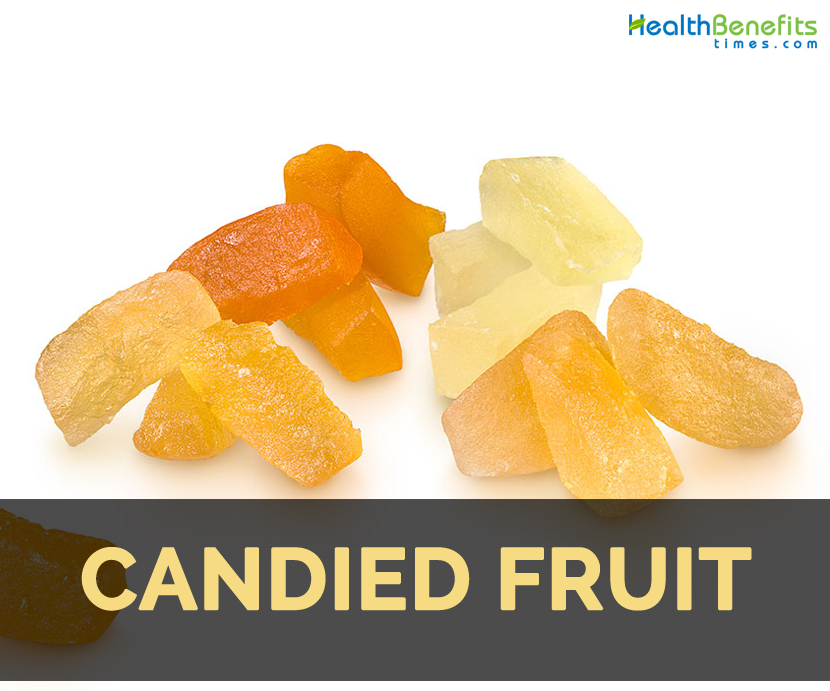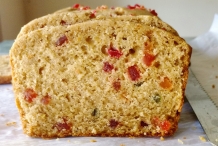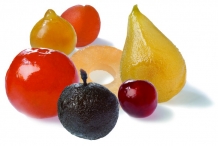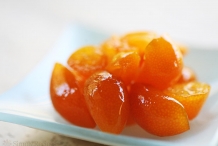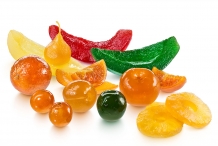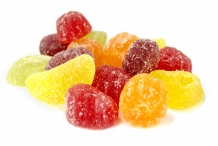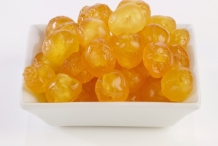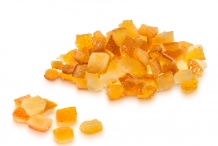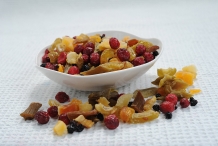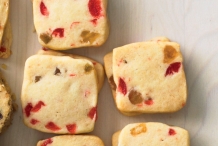The fruit is cut into smaller pieces and placed in heated sugar syrup that absorbs moisture within fruit and prevents it. The period of time required for preservation process depends on the size and type of fruit i.e. from several days to several months. The commonly candied fruits include apricots, cherries, dates, apples, ginger root and pineapple. The candied peels are citron and orange. Generally the recipes may vary from region to region but the basic principle of making candied fruit is to boil fruit and steep it in strong sugar solution for weeks and dry of the remaining water. Candied fruits are an ingredient in chocolate confectionery and patisserie. Due to its versatile nature, it is used in sponge cakes, filling cakes and also ice creams. It is found in various forms such as whole, halves, cubes, quarters, cups, strips, pastes, crumble and mixes.
History
The methods of preserving foods with the use of sugar or honey or palm syrup were known to ancient cultures of Mesopotamia and China. Arabs were the precursors of modern candying who served candied citrus or roses at the valuable moments of their banquets. Candied fruit made its way to West with Arab domination of Southern Europe parts. The first document dates back to 16th century in Europe demonstrates use of candied fruit. It became a vital ingredient in Italy in culinary tradition which includes the Cassata Siciliana, Milanese panettone and the Cannoli.
How to Eat
- Candied fruit is added to cookies, cakes, garnishes and also dipped in chocolate.
- It could be consumed in its own.
- Use it in desserts and fruitcake recipes.
- Candied fruit is used in quick breads, Panettone and oatmeal cookies.
Other Facts
- Basically, candied fruits are preserved by a sugar or sweetener.
- The candying process might differ.
- It takes from days to months to become candied completely.
- Candied fruits are used in desserts, baked goods and mostly in fruitcake.
References:
https://en.wikipedia.org/wiki/Candied_fruit
https://www.sercomitalia.com/products/candied-fruits/
http://www.recipetips.com/glossary-term/t–38871/candied-fruit.asp
http://tenrandomfacts.com/candied-fruit/
https://www.gourmetsleuth.com/ingredients/detail/candied-fruit
Comments
comments
| Candied Fruit Quick Facts | |
|---|---|
| Name: | Candied Fruit |
| Origin | Probably, candied fruit is believed to be originated from the Middle Eastern Arabs. |
| Taste | Sweet |
| Calories | 322 Kcal./cup |
| Major nutrients | Carbohydrate (63.65%) Sodium (6.53%) Manganese (4.83%) Total dietary Fiber (4.21%) Copper (3.22%) |
